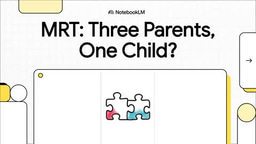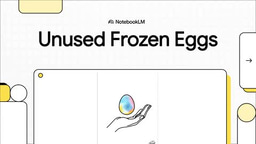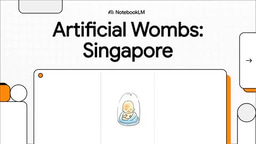Public Consultation on Human Stem Cell-Based Embryo Models (SCBEMs) and Synthetic Embryos should be conducted by the Bioethics Advisory Committee (BAC) of Singapore
Published in Social Sciences, Cell & Molecular Biology, and Law, Politics & International Studies
Please kindly refer to the following articles:
Synthetic human embryos pose bioethical dilemmas
Please also see the slide presentation video:
Introduction
Stem Cell-Based Embryo Models (SCBEMs), also known as synthetic embryos or stembryos, are laboratory-cultured entities resembling embryos that are created entirely from stem cells in vitro, eliminating the need for sperm or eggs. In rapid succession, two separate research teams from the Weizmann Institute of Science (Israel) and Cambridge University (United Kingdom) independently achieved the formation of SCBEMs by employing human embryonic stem cells (hESCs). Although such SCBEMs cannot be considered as true human embryos, these studies were nevertheless limited to an in vitro culture period of 14 days, based on international ethical standards for human embryo research that aim to avoid primitive streak formation at the onset of gastrulation.
Controversy over potential applications of SCBEMs in human reproduction
There is a possibility that SCBEMs might be applied to human clinical assisted reproduction. Among the diverse potential reproductive applications of SCBEMs are the treatment of primary infertility, age-related female infertility, posthumous reproduction, transgender and intersex parenthood, same-sex and solo parenthood. Nevertheless, under Singapore law, only legally married heterosexual couples can have access to clinical assisted reproduction services, while the state does not recognize same-sex marriages and de facto marriages with a live-in partner.
The utilization of SCBEMs in human clinical assisted reproduction is anticipated to be problematic in Singapore, as it could potentially disrupt familial relationships and kinship ties. Because the resulting offspring would be a genetically identical replicate of just one partner in a conventional heterosexual marriage, while being unrelated to the other partner, thus contradicting the primacy of "genetic affinity" under Singapore's family law. Moreover, under Singapore's "Human Cloning and Other Prohibited Practices Act (2004)", the application of SCBEMs in human clinical assisted reproduction is effectively banned, because such entities are considered to be clones, genetically identical replicates of the human individual from which they were derived.
Recent landmark court cases in Singapore have established the primacy of genetic affinity and blood ties between children and parents, as well as prioritizing child welfare above public policy based on sociocultural norms. It must be noted that Singapore is a common law jurisdiction modeled on the British judicial system, where legal precedents significantly influence the outcome of future court cases. For instance, the high court decision regarding the IVF sperm mix-up incident at Thomson Fertility Centre articulated that "The ordinary human experience is that parents and children are bound by ties of blood, and this fact of biological experience — heredity — carries deep sociocultural significance". In another significant legal ruling, the Singapore High Court approved a gay man's request to adopt his biological son, who was born through a foreign surrogate mother. The Chief Justice of Singapore declared that promoting child welfare should outweigh public policy against the formation of same-sex family units.
Although the problem of "genetic affinity" may be overcome through the creation of chimeric SCBEMs that contain stem cells from both partners in a conventional heterosexual marriage, this is not recommended. Blending male and female stem cells to create sex-discordant "chimeric" SCBEMs that include cells of both sexes would greatly increase the risks of intersex conditions arising from disorders of sex development, leading to ambiguous genitalia in the resultant offspring.
Same-sex couples also have the option of blending their stem cells to create "chimeric" SCBEMs. If both partners are genetically the same sex (either XX or XY), the chances of developing intersex conditions due to disorders of sex development are low. However, chimeric embryos and offspring are present in nature and often have a higher likelihood of developing cancer and autoimmune disorders. Given these health risks, deliberately producing chimeric SCBEMs solely to satisfy the reproductive needs of same-sex couples raises ethical and moral concerns. In any case, de facto same sex couples are barred from accessing clinical assisted reproduction services in Singapore.
Additionally, SCBEMs can also be utilized in solo reproduction by generating a genetically identical clone. This approach could appeal to individuals intent on single parenthood by deliberate choice, as it allows for single parenthood without involving any genetic input from another individual, but would face significant legal and ethical hurdles in Singapore. This is because solo parenthood with SCBEMs would run afoul of strict laws banning human reproductive cloning in Singapore, as well as contravene the Singapore government's official policy of encouraging traditional family formation via conventional heterosexual marriages, and would therefore likely be banned in the country.
Non-reproductive applications of SCBEMs
In contrast to the utilization of SCBEMs in human reproduction, the non-reproductive applications of SCBEMs will likely be permitted in Singapore. These include:
- Developmental Biology
SCBEMs may facilitate a better understanding how tissues and organs form, in particular how stem cells differentiate into various cell types, providing insights into lineage specification during development. Additionally, SCBEMs can also help to identify critical differences in embryo development between different species (e.g., mice and humans) by observing how these differences influence the in vitro formation of SCBEMs.
- Regenerative Medicine
SCBEMs can be directly utilized to generate replacement tissues and organs. Alternatively, SCBEMs can also lead to the development of new therapies for tissue and organ regeneration by facilitating a better understanding of tissue differentiation and organ formation.
- Disease Modeling
SCBEMs can be used to model various developmental disorders, such as genetic diseases and birth defects, by mimicking their early stages in a controlled setting. This enables the identification of disease mechanisms, potential therapeutic targets, and the development of novel therapeutic strategies.
- Drug Discovery and Testing of Biomedical Devices
SCBEMs can provide testing and screening platforms for evaluating newly developed pharmaceutical drugs and biomedical devices.
- Assisted Reproductive Technologies
SCBEMs can provide insights into early embryo development and implantation, which may lead to improved in vitro fertilization (IVF) success rates. These can also be used to study the causes of miscarriage and develop strategies to prevent pregnancy loss.
- Personalized and Precision Medicine
In the future, SCBEMs may contribute to personalized medicine approaches, tailoring treatments based on an individual's genetic makeup and developmental profile.
The key advantages of utilizing SCBEMs in research are as follows:
- Studying Inaccessible Stages of Development
SCBEMs allow researchers to examine early stages of human development, such as pre-implantation and gastrulation, which are difficult or impossible to study in vivo. These stages are crucial for understanding the origins of many developmental disorders and reproductive problems.
- Reduced Reliance on Animal Models
SCBEMs can reduce the need for animal models, like mice and rats, which may not perfectly replicate human development.
- Avoid Utilizing Human Embryos in Biomedical Research
SCBEMs provide a valuable platform to study human development without directly using human embryos, thereby circumventing highly controversial ethical issues. This is because SCBEMs are created from stem cells, which can be derived from embryos or reprogrammed from other human tissues (i.e., induced pluripotent stem cells).
These potential non-reproductive applications of human SCBEMs thus align with the Singapore government’s objective of building Singapore into an international biomedical hub of excellence. Nevertheless, despite the potential benefits, research on human SCBEMs raises some serious ethical questions, particularly regarding their moral status in relation to human embryos and their potentiality of developing consciousness and sentience, as well as generating human life. While SCBEMs are widely perceived as distinct from human embryos, researchers are mindful of the ethical implications of their increasing similarity to embryos and the need for appropriate oversight.
Challenges in formulating regulations and guidelines for research on SCBEMs
• Moral Status Debate: The central ethical and regulatory challenge for SCBEMs lies in determining whether they are distinct from human embryos and, therefore, exempt from existing regulations that apply to embryos, such as the widely adopted 14-day rule. While SCBEMs offer the potential for large-scale, standardized research that is not possible with limited donated embryos, their increasing complexity means they are becoming more similar to actual embryos, blurring previous distinctions and prompting concerns about their moral status.
• Regulatory Gaps and Challenges: SCBEMs often fall into a regulatory gap, as existing embryo laws were not designed with them in mind, leading to uncertainty and potential inconsistencies across jurisdictions. The differing definitions of "embryo" globally further complicate consistent regulation.
• Public Engagement: Extensive public engagement is seen as crucial for developing appropriate governance that reflects societal values and builds public trust in science. The UK's Warnock Committee (1984) is highlighted as a historical example of successful public deliberation leading to a widely accepted regulatory framework
The key ethical and regulatory debates are as follows:
- Potentiality: The "potentiality argument" suggests that an entity's potential to develop into a human being confers moral status, which some apply to embryos. While SCBEMs cannot currently result in a live birth, their increasing sophistication means they could potentially approach functional equivalence with embryos, raising questions about whether potentiality should justify differential treatment. The potential for SCBEMs to develop pain perception or consciousness is a major ethical "red line" for public concern.
- Extending the culture duration limit from 14 days to 28 days: The 14-day rule, originally a pragmatic compromise, faces challenges when applied to SCBEMs because they develop at different, non-linear rates and do not have a clear "day zero", unlike natural embryos. This has led to calls for re-evaluation and discussions about moving towards limits based on the development of "morally troubling features" rather than strict temporal limits. It has widely been proposed that the "unofficial" and "self-imposed" culture duration limit for human SCBEMs should be extended from 14 days to 28 days, which coincides with the closure of the neural tube in natural human embryos.
- Prohibition on Transfer: There is a broad international consensus, reflected in the ISSCR Guidelines and national codes, that transferring any human SCBEM to a human or non-human animal reproductive tract is unethical and should be prohibited. This serves as a "red line" to manage public concern about potential reproductive use and to reinforce that SCBEMs are purely research models.
- Consent: The ethical requirements for consent in SCBEMs research, particularly for iPSC-derived models, are a subject of ongoing discussion. While embryo donation for research in the UK requires consent for specific projects, there's a push for broader consent models for banked embryos due to practical barriers. The rapid pace of SCBEMs research also means unforeseen uses of cells and tissues may arise, prompting questions about the adequacy of initial consent.
- Terminology: The terminology for SCBEMs is debated, with terms like "embryoid", "synthetic embryo", and "stem cell-based embryo model" being commonly used. The term "SCBEMs" is preferred by the ISSCR and the UK Code for its clarity regarding origin, purpose (modeling), and what is being modeled (embryos).
Future Outlook and Recommendations
Many experts recommend that nations review their legal frameworks and develop clearer policies for SCBEMs. Without such clarity, science risks outstripping regulation, potentially triggering public concern and impacting research.
Recommendations for future governance often include:
- National Policy Review: Essential for aligning regulations with scientific advancements and societal values.
- Public Engagement: Crucial for ensuring that governance is informed by public views, values, and interests, fostering trust in science, and co-creating broader scientific aims.
- Adaptive Governance: Emphasizing flexible, proportionate, and targeted regulation that can evolve with scientific progress. Approaches like "regulatory sandboxes" are proposed to allow innovation in a controlled environment under regulatory supervision.
- Distinct Regulatory Paths: A preferred approach, particularly in the UK, is to consider human SCBEMs and natural embryos as distinct entities for governance purposes, even if they become scientifically indistinguishable due to future advances in the field. This allows for bespoke, targeted, and proportionate oversight mechanisms that are better suited to the unique characteristics and uses of SCBEMs. This would also provide stability for researchers and potentially attract investment.
- Reinforced Prohibitions: Prohibitions on the transfer of SCBEMs to human or animal reproductive tracts should be codified in "hard law" to ensure legal enforceability and public reassurance.
Overall, the global landscape for SCBEMs regulation is characterized by a dynamic interplay between scientific innovation, evolving ethical considerations, and diverse national legal frameworks, all striving to balance potential benefits with societal concerns and trust.
International Guidance: ISSCR Guidelines
The International Society for Stem Cell Research (ISSCR) plays a crucial role in providing ethical guidance for stem cell research. Its 2021 Guidelines for Stem Cell Research and Clinical Translation offer important, though not legally binding, recommendations for oversight on SCBEMs research.
• Categories of Review: The ISSCR classifies research activities into three oversight categories:
◦ Category 1: Permissible under standard review mechanisms (e.g., routine pluripotent stem cell work).
◦ Category 2: Requires specialized scientific and ethical review and approval due to heightened complexity (e.g., human embryos cultured up to 14 days, and human SCBEMs designed to resemble human embryos in 3D spatial organization, regardless of extraembryonic cell types). This category applies to both integrated SCBEMs (which contain embryonic and extra-embryonic structures and could potentially achieve complexity for further integrated development) and non-integrated SCBEMs (which mimic limited aspects of development).
◦ Category 3: Currently prohibited due to unresolved ethical and technical concerns (e.g., heritable genome editing, human reproductive cloning, or transfer of any human SCBEM to a living human or animal uterus).
• 14-day Rule Relaxation: The 2021 ISSCR Guidelines notably suggest that the 14-day rule for human embryo cultures could be relaxed if there is broad public support and strong scientific justification. However, the guidelines advocate for in-depth public engagement before such changes.
• Influence: The ISSCR guidelines are widely adopted and influence national policy reviews by governments and researchers worldwide, serving as a transparent and respected source of ethical standards and best scientific practices.
• United Kingdom (UK)
◦ Definition of Embryo: The Human Fertilisation and Embryology Act 1990 defines an embryo as a "live human embryo". This definition is considered imprecise but has allowed some flexibility. While SCBEMs currently differ scientifically from embryos produced by fertilization, these differences are decreasing. It's unclear whether SCBEMs fall under the UK's embryo research governance framework. Courts might eventually conclude that some integrated and non-integrated SCBEMs fall within the "ordinary language" meaning of an embryo due to their human genome and organized development, or they could be seen as mere laboratory tools. The Secretary of State has the power to expand the definition of "embryo" through regulations. Currently, the Human Fertilisation and Embryology Authority (HFEA) operates on the assumption that SCBEMs are not embryos for the purposes of the Act, meaning they are not subject to its regulatory regime.
◦ Current Regulation of SCBEMs: If not covered by the HFEA's definition, SCBEM research has very little legal regulation. There are no legal instruments requiring ethical review (beyond employer rules), preventing development beyond the 14-day rule, regulating genetic manipulation, or inhibiting implantation into human or animal hosts. This lack of regulation is seen as problematic and potentially inconsistent with public expectations.
◦ 14-Day Rule: This rule, a cornerstone of UK embryo research for over 30 years, limits in vitro embryo culture to 14 days or the appearance of the primitive streak. Its application to SCBEMs is challenging because SCBEMs can develop at different rates and lack a clear "day zero" like fertilization.
◦ Oversight and Prohibitions: If SCBEMs are deemed embryos, research requires HFEA licensing, record-keeping, and compliance with the 14-day rule and other conditions, with potential criminal penalties for non-compliance. However, the current system for tracking individual embryos is impractical for batches of SCBEMs. The UK SCBEM Code of Practice (2024), a voluntary "soft law" approach, aims to fill the governance gap. It recommends all SCBEMs be subject to ethical review and cultured only for the minimum time necessary for scientific objectives, overseen by an Oversight Committee. It prohibits the transfer of human SCBEMs to human or non-human animal reproductive tracts.
◦ Proposed Future Governance: The Nuffield Council on Bioethics (NCOB) report (2024) recommends distinguishing SCBEMs from embryos for governance purposes and reinforcing prohibitions (like transfer to a uterus) in "hard law". It suggests a phased approach: first, embed the voluntary UK SCBEM Code, then introduce a regulatory sandbox for agile oversight, leading to settled, proportionate regulation. An interim threshold for SCBEM development is proposed to prevent models with capacity for pain or awareness, exploring gestation feasibility, or modeling late-stage fetuses genetically altered to avoid pain/awareness.
• Australia
◦ Definition of Embryo: Australian legislation (Research Involving Human Embryos Act 2002) has a broad definition of "embryo". Many SCBEMs, including "iBlastoids," fall within this definition if they are a "discrete entity" with "organised development" and a "human nuclear genome" that has the "potential to develop [at least] up to the stage at which the primitive streak appears".
◦ Current Regulation of SCBEMs: Due to this broad definition, SCBEM research in Australia is largely as limited as research with fertilized embryos. It requires a license from the National Health and Medical Research Council (NHMRC) Embryo Research Licensing Committee (ERLC). It is subject to the 14-day rule.
◦ Oversight: The ERLC provides specialized oversight and has issued guidance to determine which SCBEMs are considered embryos under Australian law. Institutional ethical approval is also required.
• Japan
◦ Definition of Embryo: Traditionally, human embryos are seen as "buds of human life, potentially leading to the birth of a person if transferred into the uterus". SCBEMs are viewed as differentiated derivatives from human stem cells and are therefore clearly distinct from natural embryos, meaning embryo regulations do not apply to them.
◦ Current Regulation of SCBEMs: The new Japanese regulations do not specify a maximum culture period for SCBEMs, given their present improbability of reaching a fetal stage. Research institutions are expected to culture SCBEMs only as long as scientifically necessary and undergo ethics review on a case-by-case basis. Transferring SCBEMs into a uterus or any procedure likely to lead to birth is explicitly prohibited. Oversight is complex, spread across multiple guidelines depending on the type and intended use of stem cells. Institutional ethics committees may face challenges in addressing the nuanced ethical issues. No special consent protocol is mandated for iPSCs or somatic stem cell-based embryo models, but this may warrant further discussion regarding donor autonomy.
• China
◦ Definition of Embryo: China's legal system lacks explicit definitions for key embryo-related terms.
• South Korea
◦ Definition of Embryo: The Act's definition of "embryo" relies on fertilization, which excludes SCBEMs and similar embryoid research from its direct purview.
◦ 14-Day Rule: Permits use of surplus IVF embryos for research until the appearance of a primitive streak, rather than a strict 14-day rule.
• United States (USA)
◦ Definition of Embryo: There is no overarching federal legal definition of "embryo"; definitions vary by state. The 1996 Dickey-Wicker Amendment defined embryos for federal funding purposes to include those derived by fertilization, parthenogenesis, cloning, or other means from human gametes/diploid cells.
◦ Current Regulation: Federal funding for research involving embryo destruction is prohibited. Privately funded research is governed by state laws and adopted professional guidelines.
◦ 14-Day Rule: The National Academies' Guidelines for Human Embryonic Stem Cell Research suggest a 14-day or primitive streak limit, which is widely adopted by major US stem cell research institutions.
◦ Oversight: Specialized Embryonic Stem Cell Research Oversight (ESCRO) committees are emphasized.
• France
◦ Definition of Embryo: The Bioethics Act 2021 imposed a 14-day limit on embryo cultivation. The French Conseil d’Orientation takes the position that SCBEMs are not embryos, partly due to their origin from stem cells rather than natural conception, and their function as research tools rather than for reproduction.
◦ Current Regulation: The Bioethics Act 2021 relaxed oversight for hESC research and requires researchers to declare projects using human pluripotent stem cells (hPSCs) to model embryos to the Biomedicine Agency. It includes threats of criminal sanctions for regulatory noncompliance specific to SCBEMs. Statutory prohibitions on human cloning and research embryo creation remain.
◦ 14-Day Rule: A 14-day limit for embryo cultivation was imposed by the Bioethics Act 2021.
• Netherlands
◦ Definition of Embryo: The Embryo Act 2002 defines embryos as "a cell or group of cells with the capacity to develop into a human being". Whether an SCBEM is legally an embryo depends on its capacity to develop into a human being.
◦ Proposed Regulation: The Health Council (2023) advised revising legislation to define limits on culture time for both embryos and SCBEMs. It proposed a 28-day culture limit for both embryo research and integrated SCBEMs that might have human developmental potential, designating these as "non-conventional embryos". These recommendations are not yet enacted.
• Other Countries (Sweden, Germany, Spain, Italy, Turkey)
◦ Sweden: Regulates research on "fertilized eggs," so SCBEM research is not subject to its restrictions. It has an ethics review authority and levies mild sanctions.
◦ Germany: Prohibits human embryo research entirely. Its embryo definition refers to the embryo's potential to become a human individual. It imposes harsh penalties for creating embryos for research.
◦ Spain: Allows embryo research until 14 days post-fertilization. Creation of embryos for research is legally prohibited with some exceptions. Non-compliance is met with fines and administrative penalties.
◦ Italy and Turkey: These countries ban all research on embryos, but permit SCBEM research by default as SCBEMs fall outside their definition of an embryo.
In an elected democracy such as Singapore, government policymakers are obliged to consider public opinion, as well as carefully deliberate the broad impacts that new biomedical technology platforms such as SCBEMs might have on the entire nation in relation to its cultural values, sociopolitical dynamics and relevant laws. This is why the Singapore government has specifically set up the Bioethics Advisory Committee (BAC) to regularly carry out public consultation and dialogue with the public to solicit feedback on new biomedical technologies. Other countries should learn from Singapore’s example and follow suit.





Please sign in or register for FREE
If you are a registered user on Research Communities by Springer Nature, please sign in